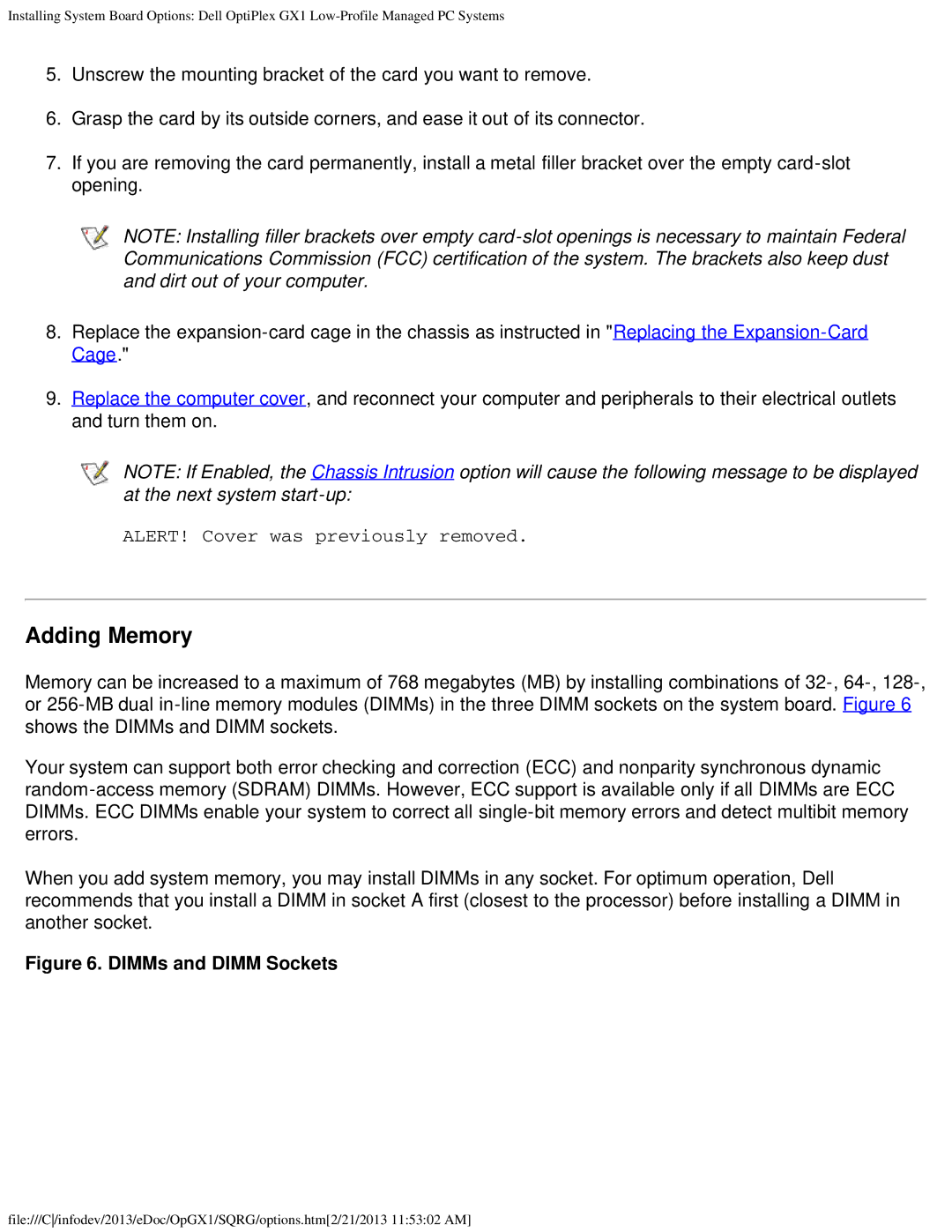
Installing System Board Options: Dell OptiPlex GX1
5.Unscrew the mounting bracket of the card you want to remove.
6.Grasp the card by its outside corners, and ease it out of its connector.
7.If you are removing the card permanently, install a metal filler bracket over the empty
NOTE: Installing filler brackets over empty
8.Replace the
9.Replace the computer cover, and reconnect your computer and peripherals to their electrical outlets and turn them on.
NOTE: If Enabled, the Chassis Intrusion option will cause the following message to be displayed at the next system
ALERT! Cover was previously removed.
Adding Memory
Memory can be increased to a maximum of 768 megabytes (MB) by installing combinations of
Your system can support both error checking and correction (ECC) and nonparity synchronous dynamic
When you add system memory, you may install DIMMs in any socket. For optimum operation, Dell recommends that you install a DIMM in socket A first (closest to the processor) before installing a DIMM in another socket.
Figure 6. DIMMs and DIMM Sockets
file:///C/infodev/2013/eDoc/OpGX1/SQRG/options.htm[2/21/2013 11:53:02 AM]
